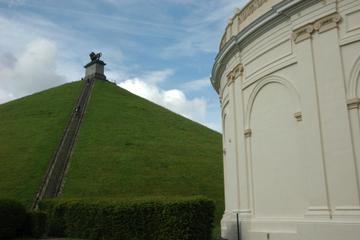Lions Mound
TIME : 2016/2/22 9:56:28

Lion's Mound
The Lion’s Mound is an artificial hill commemorating the location where Prince William II of the Netherlands was wounded during the infamous battle of Waterloo against the Napoleonic armies. The prince’s father, King William I of the Netherlands, ordered construction in 1820; workers used earth taken straight from the historic battlefield, a symbol of the Allied victory and a tribute to Prince William’s sacrifice. The hill was later on surmounted by an imposing 31 tons, 15 feet high and 15 feet wide Medici-like lion statue (standing male lion with ball under one paw looking to the side), which stands upon a stone-block pedestal. The lion was not picked by coincidence; not only does it symbolizes courage, it is also the heraldic beast on the personal coat of arms of the Netherlands monarchs. The sphere under the lion’s right front paw signifies victory of global European peace. For a long time visitors were led to believe that the lion was cast from brass melted down from cannons abandoned on the battlefield; this was, however, inaccurate, as the lion is cast out of nine different pieces iron. The view from atop the hill offers splendid panoramas of the battlefield, and gives visitors a better idea of how the battle was carried and how the cavalry and infantry were deployed. The mound’s shape and lion sculpture became such an icon of Waterloo that they are now represented on the municipality’s coat of arms.
Practical Info
Lion's Mound is located 30 kilometers south of Brussels in Belgium. It can be reached by car via routes RD and junction 26 in 30 minutes. Entry costs €13.50 per adult, €11 per student and €8 for children aged 7-17. Lion's Mound is open every day from 9:30am to 6:30pm between April and September, and from 10 a.m. to 5 p.m. between October and March, with the last admission 30 minutes before the mound closes.
